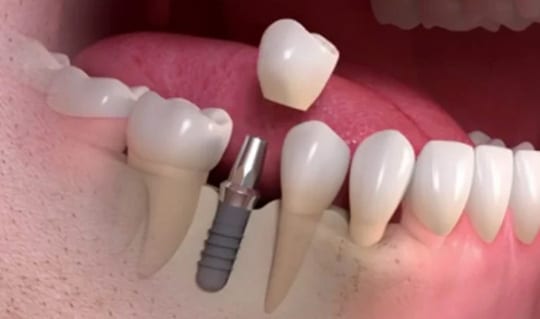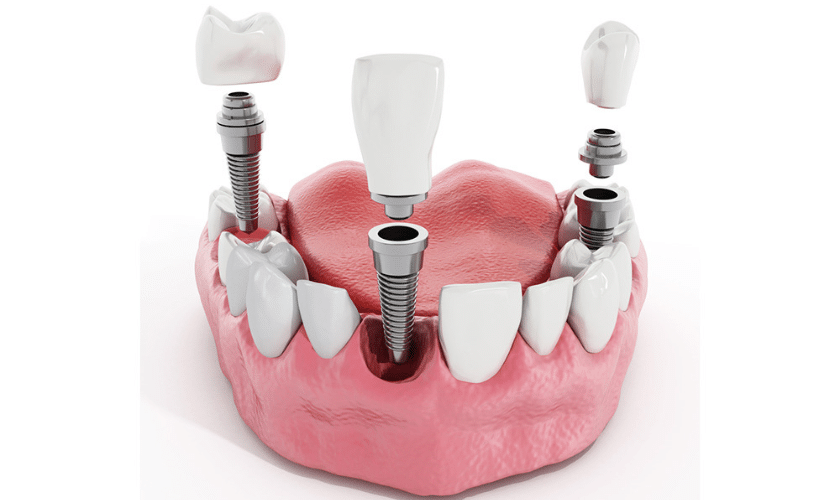
The evolution of dental implants has long anchored innovation in dentistry, and the year 2023 emerges as a milestone in this transformative journey. These tiny marvels have reshaped the landscape of modern dentistry, offering not just tooth replacement but a profound enhancement to the quality of life. As we peer into the future of dental implants, this blog serves as a spotlight, illuminating the latest breakthroughs and innovations that promise to redefine how we approach oral health. From overcoming existing limitations to ushering in a new era of personalized, bioactive implants, the developments of 2023 stand poised to revolutionize not only smiles but the entire realm of dental care. Join us as we unveil the promising advancements that herald a future where dental implants become more than mere replacements – they become catalysts for a brighter, healthier tomorrow.
Current State of Dental Implants
The current state of dental implants represents a significant leap forward in dental technology, revolutionizing how we address tooth loss. Traditional implants, primarily made of titanium, have been a gold standard for years, offering stability and functionality akin to natural teeth. However, challenges persist. The process of osseointegration, in which the implant fuses with the jawbone, can be lengthy, causing delays in restoration and impacting patient comfort. Additionally, the precise placement of implants is crucial and can be complex, demanding extensive expertise from practitioners.
Despite their effectiveness, concerns about potential bone resorption and limitations in catering to diverse patient anatomies highlight the need for innovation. These limitations have spurred relentless research and development, aiming to enhance existing technologies and overcome these hurdles to make dental implants more efficient, comfortable, and universally accessible.
Innovations and Breakthroughs in Dental Implants
Dental implant technology has seen remarkable advancements, improving both the procedure itself and the materials used. Some notable innovations include:
3D Printing: This technology allows for the creation of customized implants based on a patient’s specific oral structure. It enhances precision and reduces surgery time.
Osseointegration Enhancements: Surface modifications on implants encourage faster and stronger bonding with the jawbone, reducing healing time and increasing implant success rates.
Mini Implants: Smaller diameter implants are gaining popularity due to their minimally invasive nature. They’re used for stabilizing dentures and in situations where traditional implants might not be feasible.
CAD/CAM Technology: Computer-aided design and manufacturing facilitate the creation of precise implant restorations, ensuring a better fit and aesthetic outcome.
Immediate Load Implants: Some advancements allow for immediate loading of implants with temporary restorations. This reduces treatment time and offers patients quicker functional teeth.
Biocompatible Materials: The development of new materials, such as zirconia, and improvements in existing ones ensure better compatibility with the body and higher durability.
Guided Surgery: Utilizing digital technology like cone-beam computed tomography (CBCT) and software, dentists can plan and perform implant surgeries more accurately, minimizing risks and improving outcomes.
Smart Implants: Emerging technologies integrate sensors in implants to monitor healing, detect infections, or measure bite force. This data helps in optimizing treatment and aftercare.
Regenerative Techniques: Advancements in tissue engineering and regenerative medicine offer promising approaches to stimulate bone and tissue growth around implants, enhancing their longevity.
These innovations collectively aim to make dental implants more accessible, efficient, and comfortable for patients while improving long-term success rates and outcomes.
Future Prospects
Looking ahead, the anticipated developments in dental implant technology are nothing short of revolutionary. Bioactive materials are on the horizon, promising implants that actively interact with surrounding tissues, fostering better integration and longevity. Furthermore, advancements in regenerative therapies hold promise for stimulating bone growth and comprehensively addressing bone loss concerns.
Implants might not only serve as tooth replacements but also as sensors, monitoring oral health metrics in real time. Imagine implants detecting signs of disease or infection before symptoms manifest, leading to proactive intervention and improved overall health.
Shaping the Future of Dentistry
The future of dental implants appears vibrant and transformative. Anticipated developments promise a paradigm shift, making implants more efficient, durable, and seamlessly integrated into oral health care. Patients can expect shorter recovery times, enhanced comfort, and improved aesthetics.
For practitioners, these innovations open doors to a new era of precision and patient-centric care. The ability to personalize treatments and leverage cutting-edge technology will redefine the standard of dental practice.
Innovation in dental implants isn’t merely about restoring smiles; it’s about enhancing lives. As 2023 unfolds, the unveiling of these advancements showcases the relentless pursuit of perfection in dentistry, promising a future where dental implants set new benchmarks for oral health care.
The evolution of dental implants has indeed been a fascinating journey, marking a significant transformation in the field of dentistry. From their early conceptualization to the groundbreaking advancements witnessed in 2023, dental implants have undergone a remarkable evolution, revolutionizing the way we approach tooth replacement and oral rehabilitation.
The future of dental implants holds promise for even more sophisticated, efficient, and patient-centric solutions. Smaller, smarter, and more biologically compatible implants are likely to become the norm, further blurring the line between natural teeth and dental prosthetics.
In essence, the journey of dental implants from their inception to the present day represents an inspiring narrative of scientific discovery, technological innovation, and a relentless pursuit of perfection in oral healthcare.



